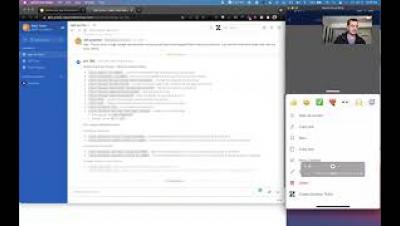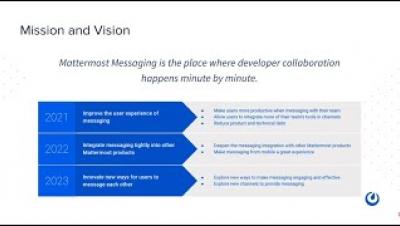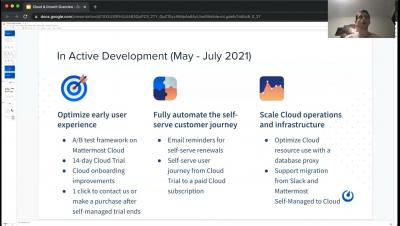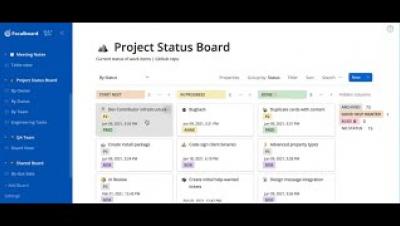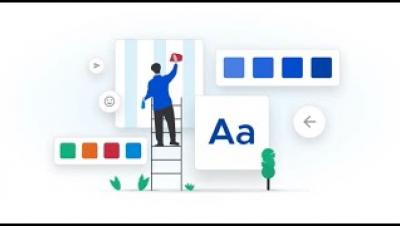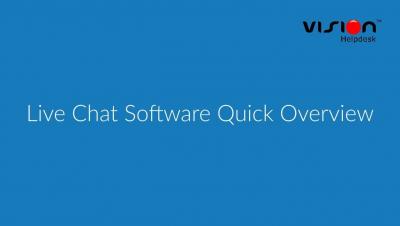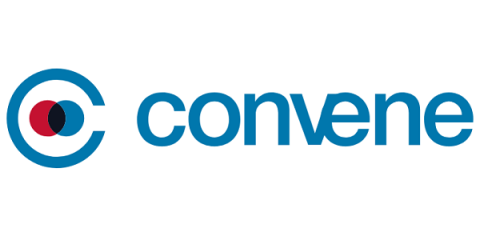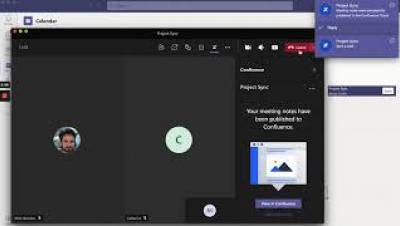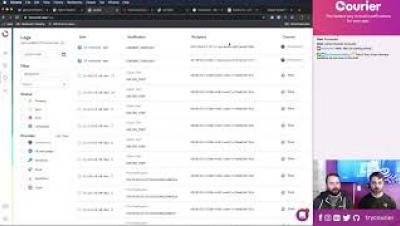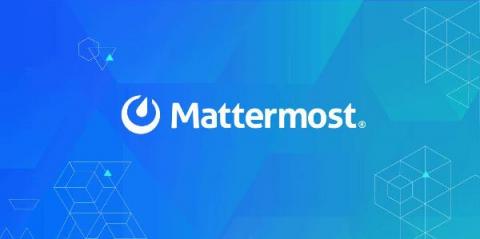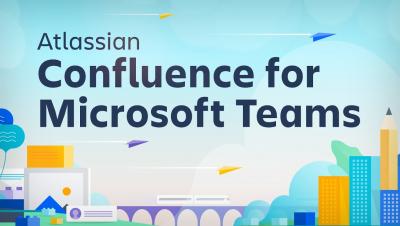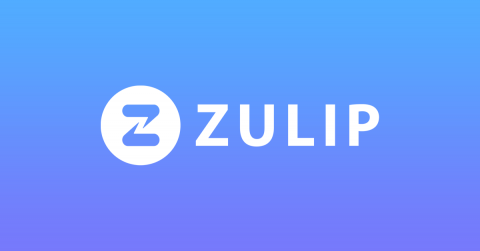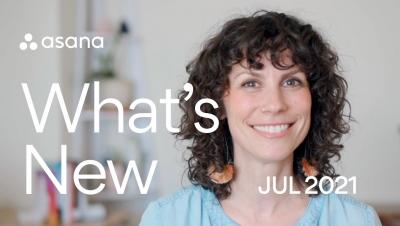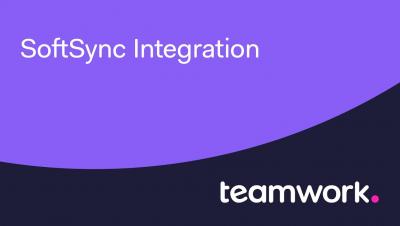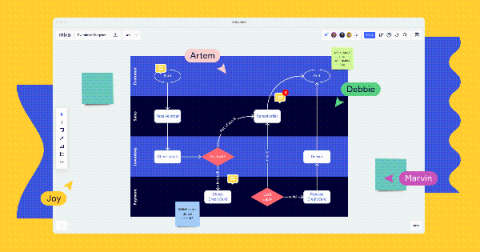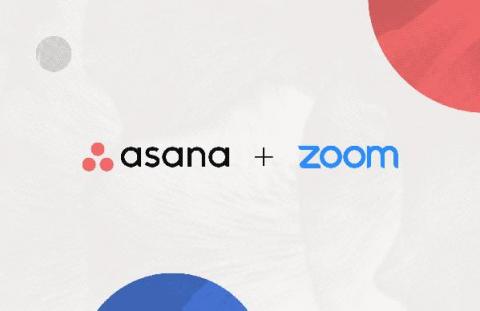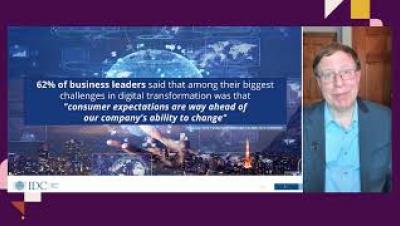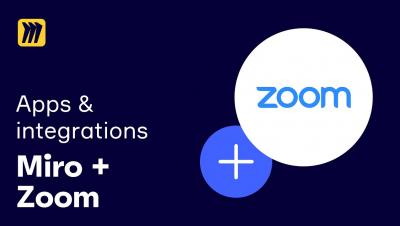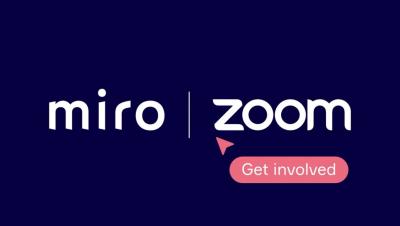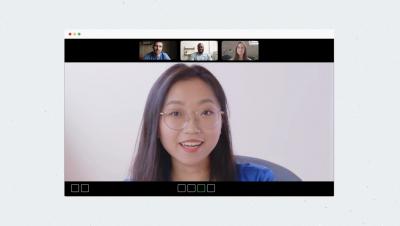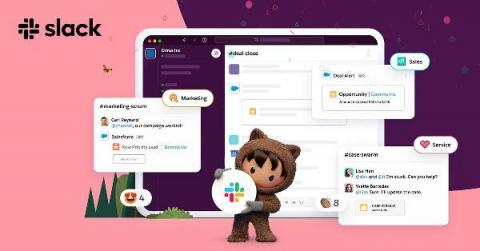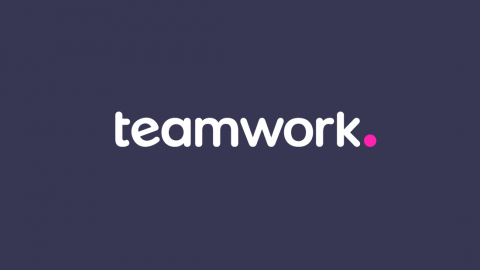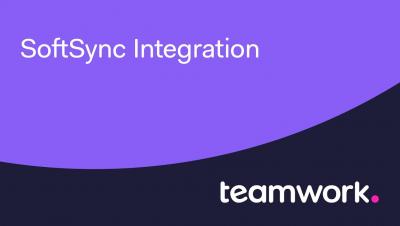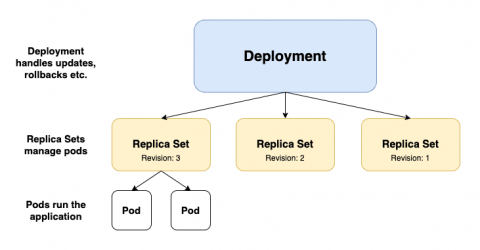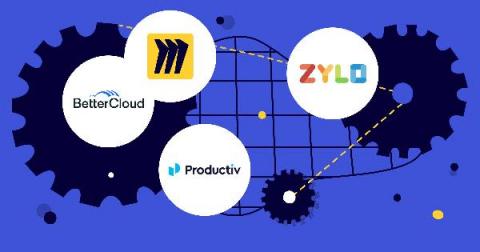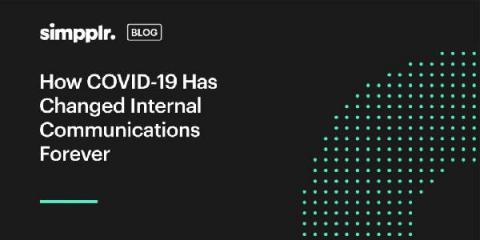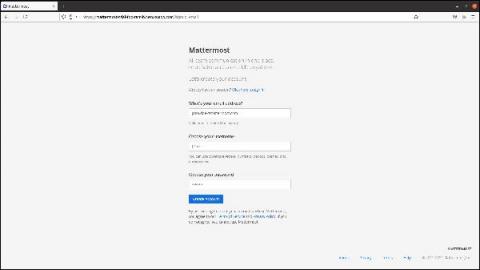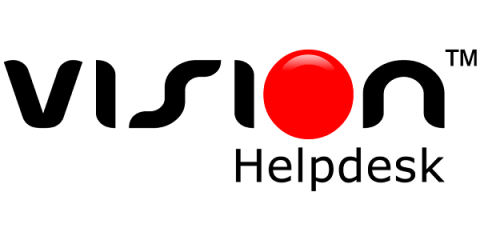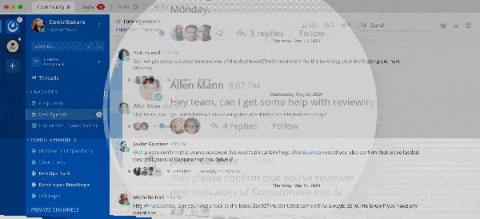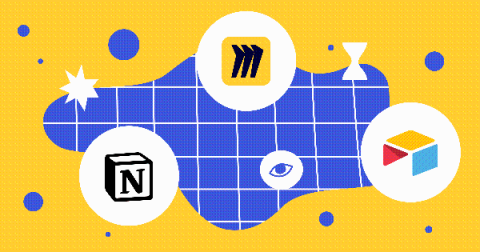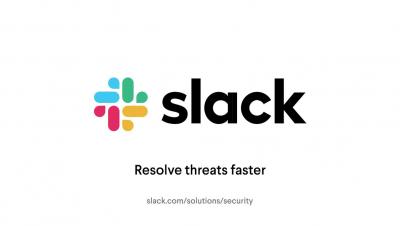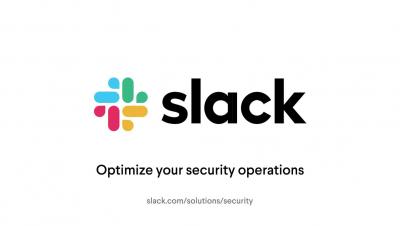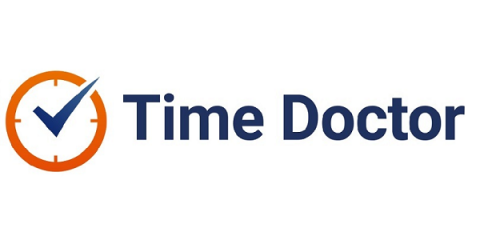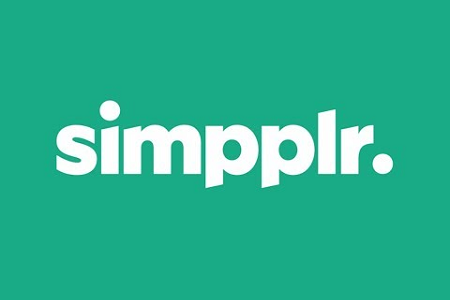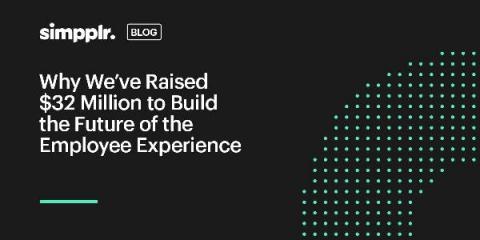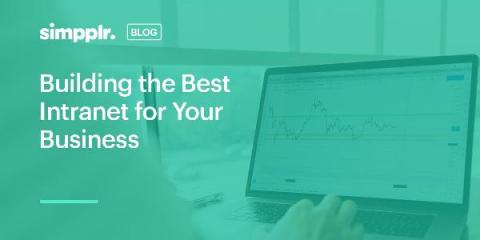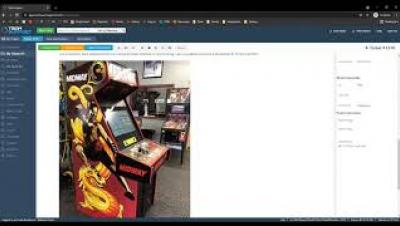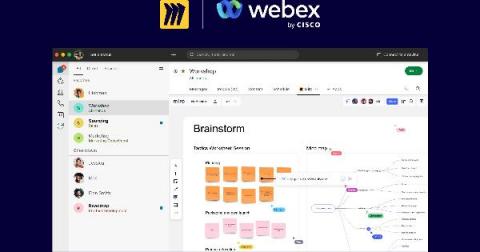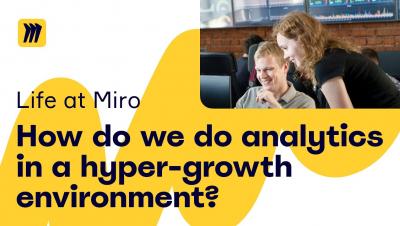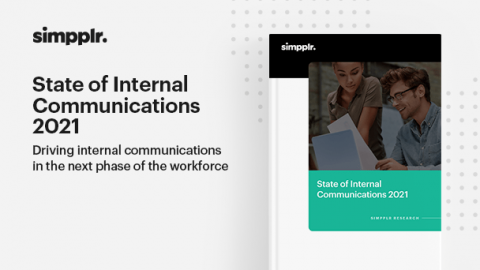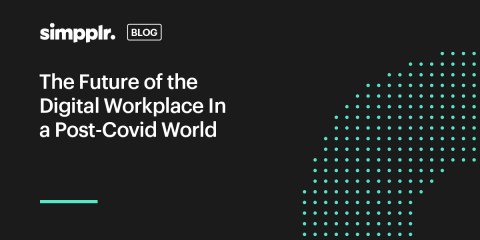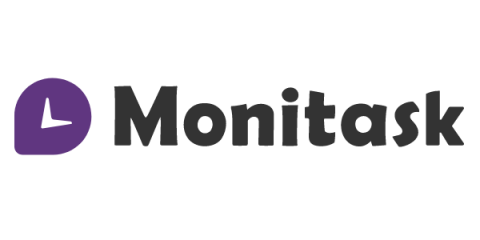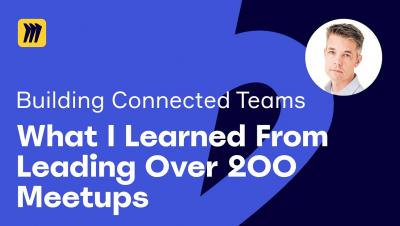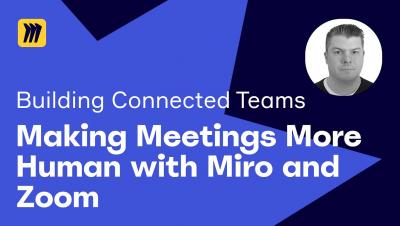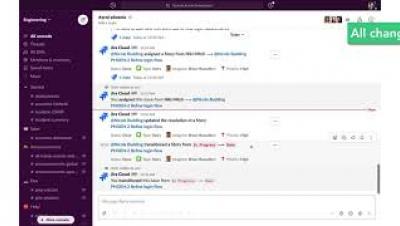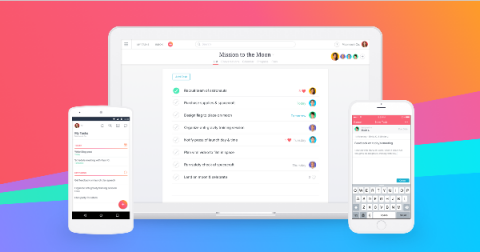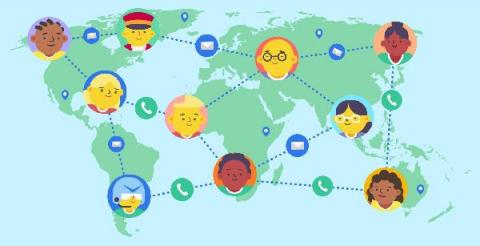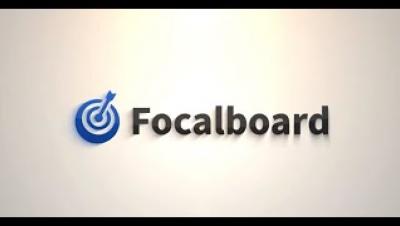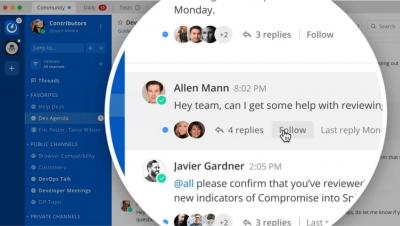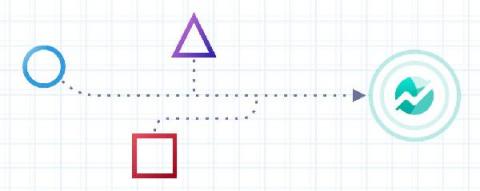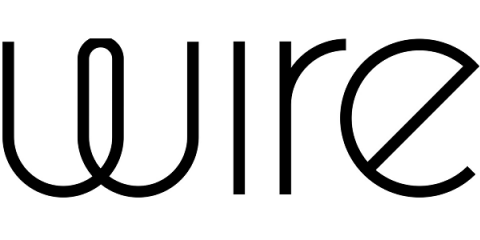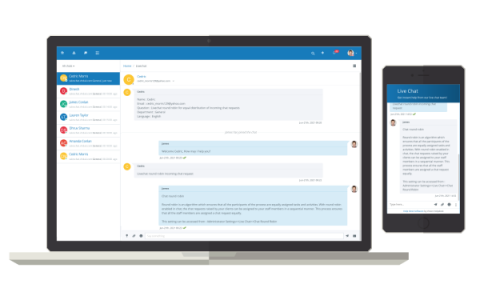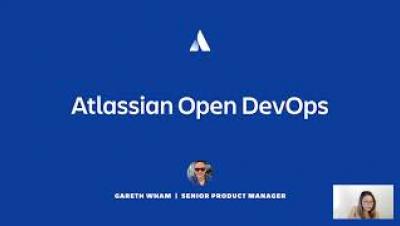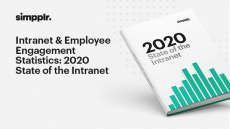Teams | Collaboration | Customer Service | Project Management
July 2021
Mattermost Playbooks Roadmap Update June 2021
Mattermost App Framework Roadmap Update June 2021
Mattermost Messaging Roadmap Update June 2021
Mattermost Cloud Roadmap Update June 2021
Focalboard Roadmap Update June 2021
Mattermost Compass Design System Roadmap Update June 2021
Live Chat Software Quick Overview - Vision Helpdesk
Are Hybrid AGMs Upholding Corporate Governance?
Before the COVID-19 pandemic, Annual General Meetings (AGMs) were typically held in a physical venue where shareholders could directly ask questions and vote for resolutions on site. The chairperson and directors of the company had to be on the ball and be prepared for questions to come their way once spotlighted. However, in the last year, when the pandemic struck the world, everyone was pushed into an era of digital transformation.
Journey Mapping: How to Master the Art of Interrupting
Notifications are good for user experience. There, I said it. The word “notification” might conjure images of annoying interruptions for your users, but it should also remind them of moments where they were quietly guided to a more desirable experience. Notifications can guide users through key setup steps in onboarding, reward a positive interaction, and encourage exploration.
Secure messaging apps: why, what, and how
Secure messaging apps have always been highly valued among their consumers – but the security ladder keeps going higher and higher. The technology is advancing at a high speed, and organizations are trying to ensure the strictest security standards for messaging apps their employees use. Namely, ever since the abrupt switch to a remote work environment in 2020, companies are seeing a rise in cybersecurity breaches.
Confluence Cloud for Microsoft Teams App Demo
Securing XML implementations across the web
In December 2020, we blogged about security issues in Go’s encoding/xml with critical impact on several Go-based SAML implementations. Coordinating the disclosure around those issues was no small feat; we spent months emailing the Go security team, reviewing code, testing and retesting exploits, coming up with workarounds, implementing a validation library, and finally reaching out to SAML library maintainers and 20 different companies downstream.
Building strong professional communities requires these essential skills
Meet the new Confluence Cloud for Microsoft Teams app
Element raises $30M as Matrix explodes!
The world has truly woken up to the age of decentralised communication. The US congress is releasing the ACCESS Act bill to enforce interoperability and data portability between platforms; the EU is pushing forwards with the Digital Markets Act for the same - and the German national healthcare system has published its plan to standardise 150,000 healthcare organisations on Matrix.
Zulip releases 'Teach a course' education product
Zulip for Education is a new open source team chat product used at university departments around the world, including MIT, University of California San Diego and Technical University of Munich, Germany.
Teamwork - Using The Jira SoftSync Integration
Q&A with Asana's Head of Product: How Asana is building a navigation system for the future workplace
The past year has seen flexibility and adaptation in the face of large-scale changes—with companies investing in tools like chat, content, scheduling, and more to collaborate. That said, organisations haven’t seen a meaningful uptick in productivity. That’s because all those tools aren’t doing what they’re supposed to—helping teams manage and coordinate work.
What is an organizational chart and how do you make one?
If you’ve heard someone in your company reference an “org chart” and were left scratching your head, you’re not alone. It’s a common shortening of the term “organizational chart,” which was coined by engineer Willard C. Brinton in the early 20th century. What is an organizational chart? A visual diagram showing the relationships between people and departments inside an organization.
THE NAKED TRUTH: 5 Ways Messaging Apps Are Exposing Your Conversations
Introducing the Miro app for Zoom
As we all adjusted to new ways of working over the past year, products like Miro and Zoom helped us stay connected and come as close as we could to meeting face-to-face. Today, we’re excited to announce another major step toward our vision of empowering teams to foster human connection, collaborate effortlessly, and maintain creativity, regardless of where teammates are located, with the new Miro app for Zoom.
Make meetings actionable with Asana and Zoom
Video meetings are a key source of connection between team members—whether your team is remote, hybrid, or globally distributed. Yet more face time through video calls doesn’t always equal more high-impact work. In fact, our research shows that casual chats have been replaced with unnecessary meetings, costing individuals 157 hours of productivity over the past year.
Slack Frontiers 2020: Human, inclusive, flexible: Insights on remote collaboration
How it works - the Miro app for Zoom
Introducing the Miro app for Zoom
Reimagine Meetings with Zoom & Asana
Salesforce completes acquisition of Slack
Together, Salesforce and Slack are creating the digital HQ for success from anywhere
Jira Align Blueprint - Dependencies
Bug reporting and client feedback in Teamwork with Marker.io
Reporting bugs into new Teamwork tasks is a time-consuming process. Your team and clients have to switch back and forth between your website and your Teamwork projects constantly and dabble around with a bunch of other tools like screen capture tools. And more often than not, your developers will be frustrated with the lack of actionable data in your bug reports. Where was this bug found? Which browser did you use? Do you have a screenshot?
Teamwork - Using The Jira SoftSync Integration
Breaking free from the 9-to-5 workday: Why the future of collaboration is asynchronous
Business leaders from Auto Trader UK, Sendle and FREE NOW share how asynchronous working in Slack helps their teams work faster and more efficiently.
Migrating Thousands of Cloud Instances to New Kubernetes Custom Resources
Mattermost’s Kubernetes Operator spins up and manages Mattermost instances running on Kubernetes based on a ClusterInstallation Custom Resource (CR). Mattermost Operator 1.0 has evolved a lot since its release, along with the ClusterInstallation CR in the v1alpha version. As time went by — as with any software — the Operator gained more features, configuration options, functionalities, and technical debt.
Enable SaaS management within Miro
Since more and more organizations have embraced a plethora of SaaS applications to enable them to continue working asynchronously across regions and timezones, they are facing an increasingly large portfolio of SaaS products they must manage. There is a need for a single orchestration point for visibility and control in order to maintain governance across their organization of these SaaS products.
How COVID-19 Has Changed Internal Communications Forever
The world is reopening and the future of work is here. We have fortunately made it past the worst of a worldwide pandemic and are now thinking about what comes next. Conversations about returning to the office are starting, the shift to a semblance of normalcy is here but didn’t the immediate rush to work from the home showcase that remote work is here to stay?
Installing Mattermost to Heroku
Heroku is a wonderful cloud platform that allows developers to provision and operate applications. It enables the kind of fast feedback loop that developers crave. There is a heavy layer of abstraction when using Heroku to run applications, but it’s a valid tradeoff considering its ability to bootstrap projects. In this article, we will provide the steps you need to take in order to get Mattermost running on the Heroku Cloud Platform.
Getting Started With ITSM Service Desk Software
But for any company to build a robust structure around its IT services, ITSM service desk software needs to be developed.
Hybrid work: the good, the bad and the flexible
Nowadays, it seems like everybody is talking about hybrid work. Companies are redesigning their work policies and contemplating the best ways to combine advantages of coming to the office and working from home. Ever since the pandemic abruptly entered our work lives, organizations realized that it’s possible to have employees working remotely. The hype around hybrid working models is real. However, not everybody is convinced that it is a good way forward.
How ACE incubator uses Miro to power startups
ACE is a university business incubator owned by four academic institutions in Amsterdam. ACE supports early-stage businesses within science and technology founded by students, graduates, professors, and academics from these affiliated institutions. The goal is to solidify their business case, validate all the assumptions, get introduced to the relevant network, and start growing their business.
Accessibility in Miro
Mattermost v5.37 is now available
Mattermost v5.37 is generally available today and is an Extended Support Release with a nine-month support life cycle. This release includes the following new features.
Collapsed Reply Threads are here! Get early access to the beta
We’ve heard your feedback, and are excited to announce that users of Mattermost Cloud and Mattermost Self-Managed v5.37 or later can now get early access to Collapsed Reply Threads in beta! This feature has been a top priority for our team and is the most voted feature request on our idea forum. Given this is an early access beta, we highly encourage Admins and users interested in enabling the feature to review our documentation and known issues.
Q&A: How Vodafone reaps the rewards of work management
At Vodafone, a leading telecommunications company in Europe and Africa, Darragh Cresham, Operations and Technology Manager for Vodafone Business, has taken an agile and innovative approach to work management. By giving teams a single platform to work in rather than scattered apps and ad hoc processes, Darragh has enabled his teams to move swiftly and effectively tackle the challenges that come with complex processes and a dispersed workforce. So how does Vodafone use work management?
The corporate office you once knew is gone. Let's make the hybrid workspace better
3 digital tools every design consultant needs in the new normal
Technology’s role in the way we work moved into hyperdrive during the pandemic. With people working from home and customers spending more time on devices, digital transformation arrived sooner than expected. Companies are finding creative digital tools to be productive, and this trend will continue even as people return to the office. So how can design consultants use these tools to best communicate and collaborate with their clients?
The Notifications Strategy that Put Us in the Product Hunt Newsletter
Getting noticed on Product Hunt is a start-up founder's dream, but it’s not an easy task. There’s only one chance at listing a specific domain, so it can’t be a short sighted attempt. The internet is a web of communication, and depending on how it is used, teams can effectively notify their communities about their Product Hunt launch.
Go meet-less with Confluence - get it free! | Atlassian
Resolve threats faster with Slack | Slack for Security
Optimize your security operations with Slack | Slack for Security
Secure your collaboration with Slack | Slack for Security
68 Top Online Collaboration Tools for Remote Teams (2021)
At Time Doctor, we are obsessed with remote work. Not only is it what we do, it’s who we are. Our software gives remote teams the ability to be more productive by giving them the tools to manage their time. And we, at Time Doctor, are our own customers. Every single one of our more than 100 employees uses our tool. As I said, it’s not only what we do, it’s who we are.
Simpplr Raises $32 Million To Amplify Employee Engagement As Teams Adapt To The Hybrid Office
Streamline Incident Management with PagerDuty and Slack
6 Tips on Running a Successful One on One Meeting
Why We've Raised $32 Million to Build the Future of the Employee Experience
Today I’m excited to announce that Simpplr has raised $32 million in Series C funding led by Tola Capital with continued investment from Salesforce Ventures, Norwest Capital, and George Still Ventures. This new round of funding will help us accelerate our vision of building the penultimate unified employee engagement platform.
Building the Best Intranet for Your Business
For over 25 years, the company Intranet has been a private online network for employees and authorized users to communicate, engage in collaborative projects, and develop content. Over time, it has become the centralized source of truth and a repository for company knowledge. When leveraged correctly, it can be a company’s most powerful tool next to its own product, service, or offerings.
TeamSupport's New User Training June 2021
Are Sports Organizations Safe from Cyber Threats?
Since we live in a digital world where data has surpassed the value of oil and became the most valuable resource in the world, we start to question our digital security. Data has become more accessible for hackers, which results in a constant increase of cyber-attacks over the years. Most industries function digitally, so cyber-attacks are present everywhere, including sport organizations.
Digital workplace: definition, importance, and 5 best practices
Digital workplaces are no longer a thing of the future. Although many companies were already on the track to go digital, pandemic has accelerated this process. In 2020, Gartner’s research revealed that 82% of company leaders planned to incorporate remote work into their policies well after the pandemic. However, switching to completely remote or hybrid workplaces has a prerequisite: building and maintaining strong digital workplaces.
Team collaboration: 5 reasons to improve it and 6 ways to master it
Effective team collaboration. Seems simple enough, right? You just need a group of people that get together, divide tasks among themselves, and – voila! Or is it just a bit more complicated than that.. 🤔 The reality is that teams consist of different people with different characters, experiences, and knowledge. Effective team collaboration was never easy to achieve – and this mission has grown even harder since remote work abruptly became a reality for many.
How to shift from languishing to flourishing: Q&A with Adam Grant
We need to rethink the way we work. The global pandemic has made it strikingly clear that working longer hours does not lead to greater impact. In fact, it leads to burned out, unhappy, and unproductive employees. According to the Anatomy of Work Index, 76% of workers are struggling to disconnect from work. And, in the last year, 7 in 10 workers experienced burnout. To rethink work and life in the new normal, we sat down with Adam Grant at our recent Focus & Flow Summit.
Miro for Webex Messaging
Announcing Miro for Webex Messaging
Hybrid work calls for tools that are built to quickly switch between in-person and remote collaboration. This is true for both emerging companies and large, globally distributed teams, who need access to tools and resources that can carry over from the conference room to a video meeting. That’s why we’re excited to announce the first of several upcoming integrations with Cisco Webex: Miro for Webex Messaging.
How to use a democratic leadership style without succumbing to 'majority rules'
Reporting and Analytics with Jira Align
New JQL editor in Jira - Demo Den July 2021
Take control of your time with these simple Slack tips
Accomplish a little more each day by customising Slack to reflect your own way of working.
How do we do analytics in a hyper-growth environment?
Simpplr Research: State of Internal Communications 2021
Every year, Simpplr Research conducts a study on the current state of internal communications. The State of Internal Communications 2020 (pre-COVID-19) report is Simpplr Research’s most downloaded report and provides useful benchmarking data for internal communications professionals. Insights from this report should still be relevant for most programs.
The Future of the Digital Workplace In a Post-Covid World
What hasn’t been said about COVID-19 and the changes it has forced organizations to make in light of this extended remote work period? The transition to a fully remote office workforce caused organizations to take a look at their digital tech toolkit and re-evaluate processes to help meet the immediate need.
How to build effective cooperation in a remote development team?
Technology has broken the limitations of distance and barriers when it comes to assembling teams in the modern workplace. Thanks to technology, different people from different fields, races, disciplines, and works of life can come together to work on various parts of a project through a remote development team. Remote development teams have revolutionized the modern workspace and have changed the way people work, and teams carry out projects.
How Can You Evaluate A Developer's Work?
The world is indeed a global hub, as different parts of it are closely knitted together. Regardless of your location, technology has helped bring the world closer together and forced us to interact despite our boundaries and differences. Through technology, our diversity has been harnessed to produce amazing results in various projects.
Rules for Engagement: What I Learned From Leading Over 200 Meetups
Making Meetings More Human With Miro and Zoom
What we can learn about productivity and focus from a cognitive neuroscientist and high-performance psychologist
We live in a distracting world. Mobile devices, apps, ads, and our natural environments constantly divert our attention. For example, according to the Anatomy of Work Index, workers are switching between an average of 10 apps 25 times per day, hurting focus and productivity. To share practical tips for achieving greater focus and flow in a distracting world, we brought a powerful duo together at our recent Focus & Flow Summit: cognitive neuroscientist Dr.
When everything is important: Effective prioritization for product managers
Why You Can't Replace REST with GraphQL
When I Googled “what is GraphQL” to learn more about the network protocols, all I saw was a comparison between REST and GraphQL. Most of the conclusions said, “use GraphQL.” It felt very binary (and trendy, for that matter), which is a problem because each product and use-case is unique. The fact is, whatever is newest and shiniest gets recommended more loudly. But you have to weigh the trade-offs and come up with a solution that is best for your situation.
Why setting goals and creating clarity are key to better business in the UK
The last year and a half has really tested how well organisations in the UK—and around the world—are able to communicate goals and create clarity for their teams. Without strong goals to work towards together, teams flounder and can’t do their best work, especially considering the amount of sudden change and stress people have experienced.
Why peer feedback should prioritize radical candor
How to Manage a Remote Team: 14 Effective Tips for Your Business
Monitoring Risks with Jira Align
Mattermost - Collapsed Reply Threads Tutorial
Project Integration Management 101
Project integration management is the coordination of each specific aspect of a large project. A project is more than just tasks, milestones, communications, and reports. Projects have a context; they aim to satisfy all requirements by balancing resources and fulfilling stakeholder’s expectations. In this way, Project Integration Management is the process of managing a project in its totality, including the tasks, milestones, communications, requirements, trade-offs, and resource decisions.
Why We Need a New Security Infrastructure
The turbulence of the past year has shown how vulnerable international systems can be to cybercrime and malicious actors. According to reports, cyber attacks have increased by more than 150 percent across Germany since the outbreak of the pandemic. Among US colleagues, the number of leaked government data has even increased by 278 percent.
The Rise of Collaborative Apps - Q&A with Andy Pflaum of Slack
Meet Vision Helpdesk's Live Chat Software..
The big day has finally come! We are excited to announce a new product joining the list of our Customer Service Tools – It’s a “Live Chat Software”.
Discover insights in Jira Software Cloud
Trends in Digital Communication
How to Add a Notification System to your MVP
As a product engineer, you likely understand the value of incorporating notifications functionality into your Minimum Viable Product (MVP). Here's what you can accomplish by building notifications: Drive engagement. Notifications inform customers that there’s something going on in your application that’s worthy of their attention. Timely notifying your audience about valuable content or interactions with other users is great for building trust and engagement.




